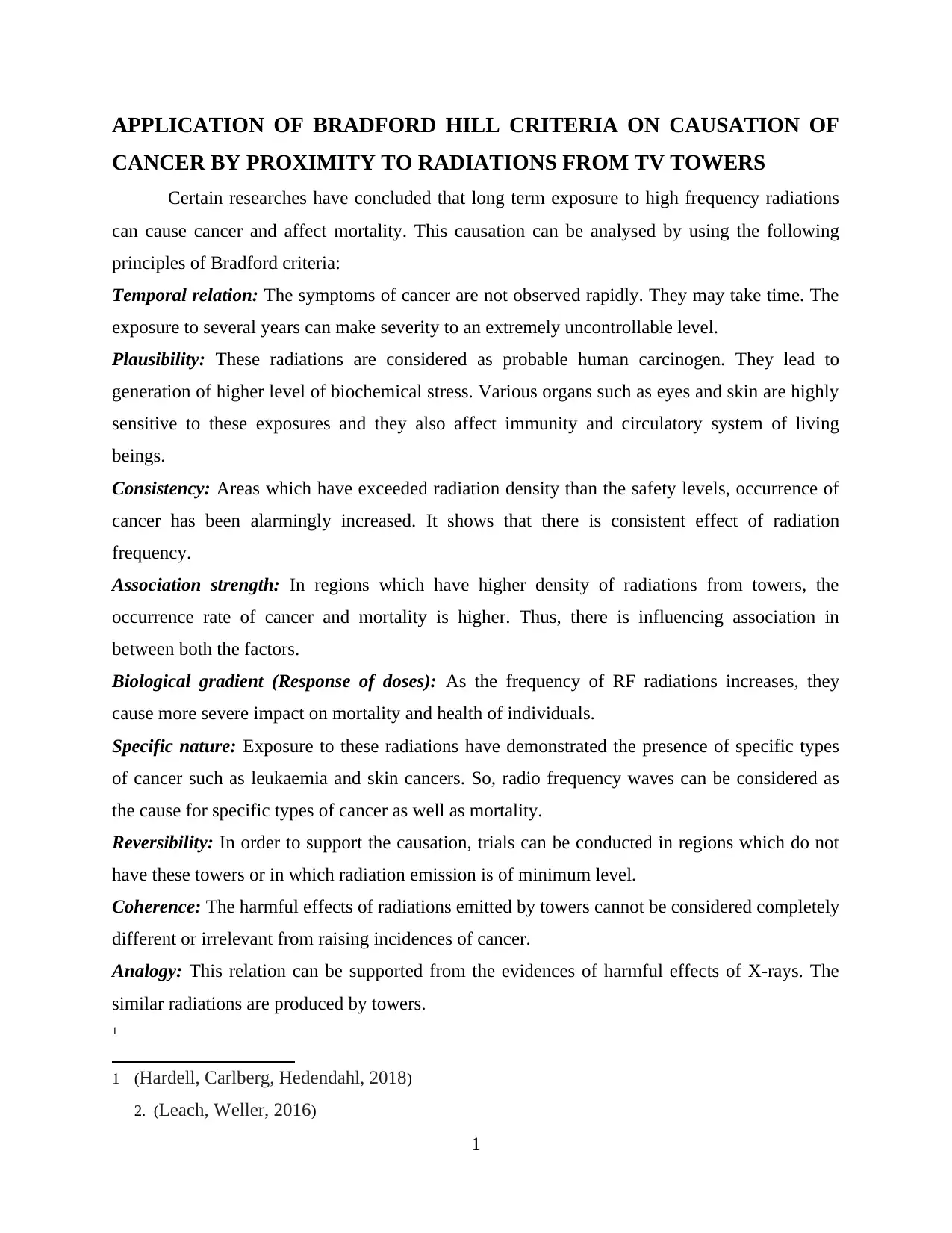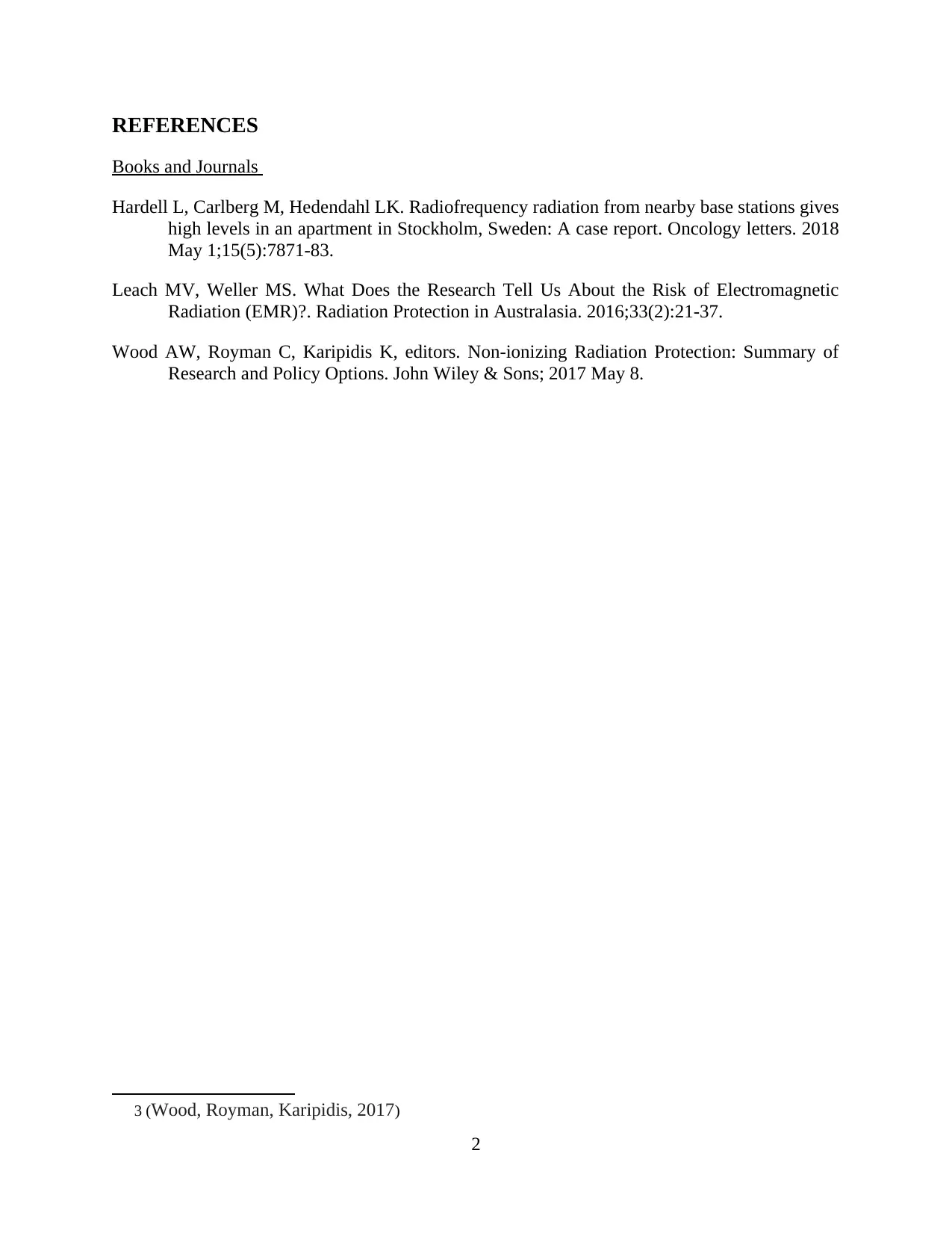Bradford Hill Criteria: Cancer Causation and Radiofrequency Radiation
VerifiedAdded on 2020/10/22
|4
|537
|396
Report
AI Summary
This report examines the potential causal relationship between radiofrequency (RF) radiation and cancer, utilizing the Bradford Hill criteria to analyze the evidence. The study begins by outlining the potential health risks associated with long-term exposure to RF radiation, including the development of cancer. It then applies the Bradford Hill criteria, which include temporal relationship, plausibility, consistency, association strength, biological gradient, specificity, reversibility, and coherence, to assess the available data. The report highlights the challenges in establishing a definitive causal link due to the complexity of environmental factors and the need for further research. It also considers the role of RF radiation in influencing cancer incidence and mortality rates, and the importance of considering specific cancers like leukemia and skin cancers. The report concludes by emphasizing the need for further research, including studies in areas with low radiation exposure, to better understand the full extent of the risks associated with RF radiation and to support or refute the causation. This report also references relevant research papers and journals that support the arguments presented.
1 out of 4





![[object Object]](/_next/static/media/star-bottom.7253800d.svg)